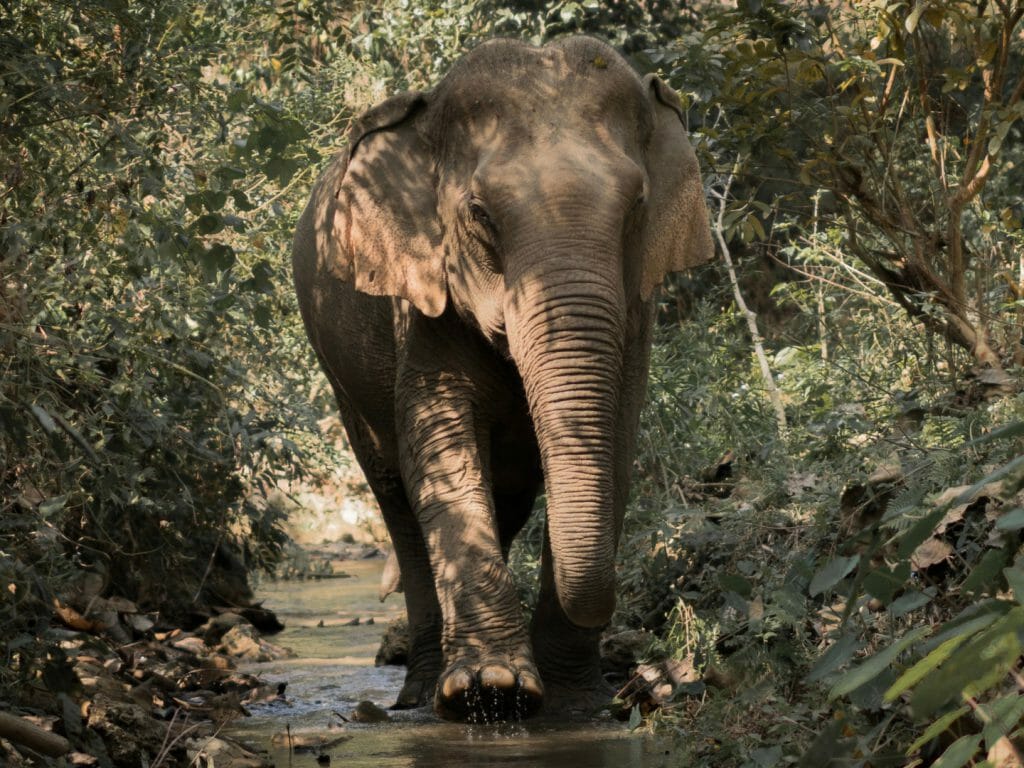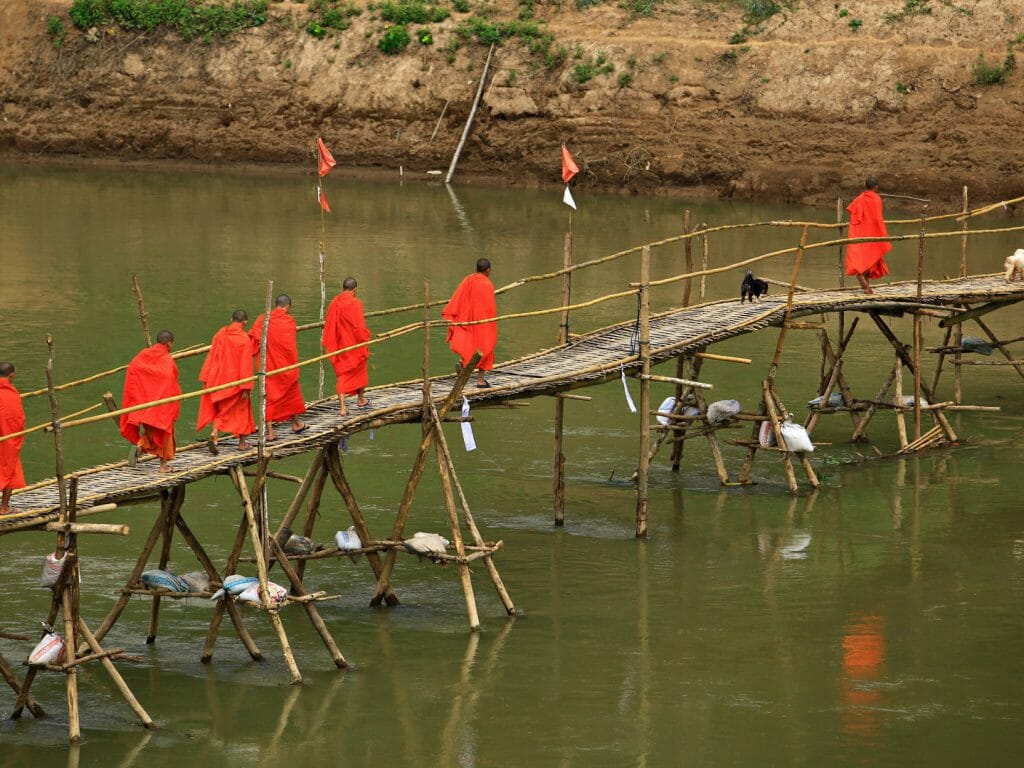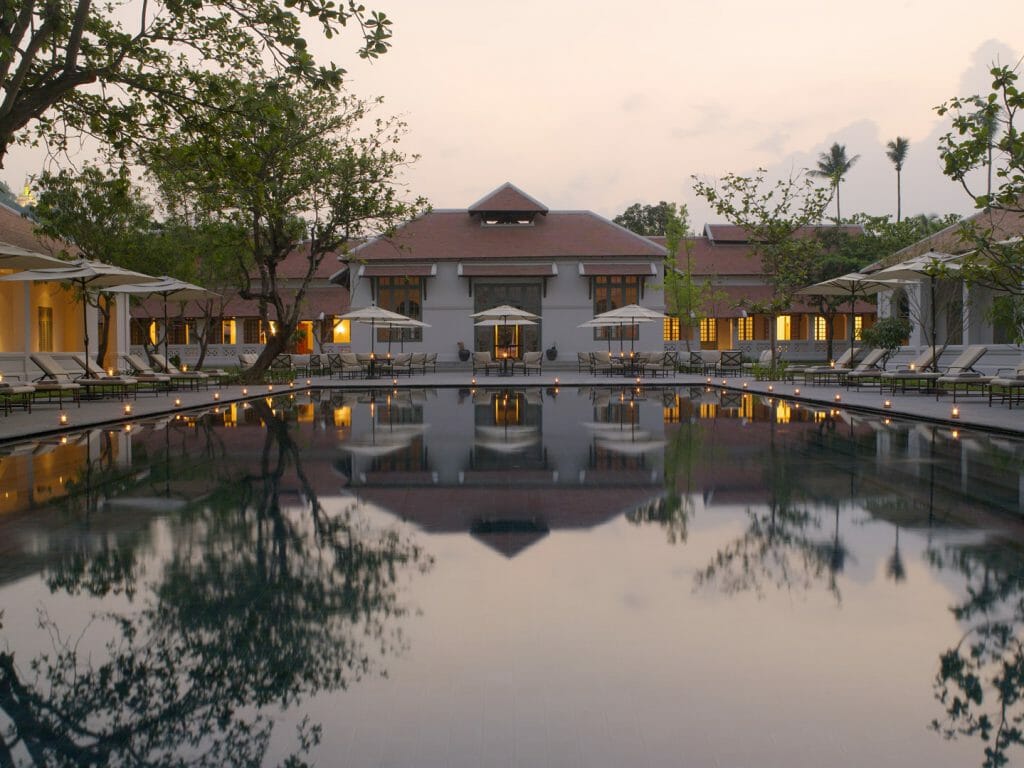In October I travelled to Vientiane, Laos, my first visit since 2006. Vientiane has become a little busier and has grown into a large town, still odd for the capital of a country. The road along the Mekong River is being improved making for a pleasant riverfront walk.
Part of my remit to myself was to look for new hotels that could be offered to our clients. The two most well known, the Setha Palace (French Colonial) and the Green Park (contemporary Lao) do not disappoint. I did discover a couple of additional gems, small, quiet and where many people are now looking to stay. The Ansara is small and without a pool, apparently it was not allowed one because it was a temptation to the monks in the nearby monastery who can see into the garden. It has a very nice outside terrace serving excellent food and an elegant restaurant on the second floor. The Salana also is a good choice, slightly more lively and suiting a person on a more limited budget but who still wants some home comforts.
A visit to the COPE Centre. COPE stands for Cooperative Orthotic and Prosthetic Enterprise and was founded in 1997. They not only fund people affected by the dreadful bombing in the 1970s by American bombers in the “Secret War” but also people suffering from diseases that affect the limbs like leprosy. The centre is very informative and shows a film related to the war, well worth a visit in my opinion.
I flew on to Phonsavan. The airport only has one flight a day, 3 times a week, the alternative is a two day drive via Vang Vieng. Phonsavan is the new town that was built after Xieng Khong was abandoned but the old French Colonial buildings of Xieng Khong can still be visited. The main attraction is the Plain of Jars, set over three locations. One site is in an open valley with a few stone jars on the hillside whilst the other two are on raised elevations, one amongst trees and another reached by a 10 minute walk through farmland. Nobody knows the origin of the jars but they are thought to have either been funerary urns or used to store liquor.
I drove down to Luang Prabang, a full days drive along winding roads through wooded mountain sides and small villages perched on the ridges. I somehow thought that the mountains should end at some point, we would get through them, but they never did which was a nice surprise! The roads were virtually empty of traffic which made the whole journey more relaxing and gave me the opportunity to absorb the landscape for myself.
Luang Prabang has changed. The town has become far busier and buildings have extended out through the valley opening in the only direction it could.
At the other end of town, where the Khan River meets the Mekong River the town retains its sleepy charm. The best hotel in town is the Residence Phou Vao, a delightful property set in lush gardens with a good outdoor pool and a wonderful spa. The Maison Souvanphoum, formerly the home to a Lao princess, has just undergone an extensive renovation. Two other hotels to look at are Amantaka, the former hospital, and the similarly designed Hotel de La Paix, the former prison. The latter has two attractive wooden building in the grounds that serve as a restaurant and a cookery school.
My special find during my stay in Luang Prabang was the Satri House located a quiet suburb of the city but within 20 minutes walk of the night market. An old colonial house with 25 rooms, this Relaix & Chateau hotel is a delight. It has outside dining, two pools and is packed with character and antiques too.
I went to see a textile outlet called Ok Tok Pok located by the main market, Phousy, down a dusty track next to the Mekong River. It has 4 rooms (2 with river views) and each one reflects a different Lao minority. You can just stay, visit or take a course that they run. These include aspects of making textiles from spinning to dying to weaving. It serves simple meals and is very restful. Also new, and now being copied, is Shangri-Lao, an elephant camp on the outskirts of town. Here you can ride elephants, learn about elephants and stay overnight in the appealing wooden chalets that overlook the river.
I flew back to Vientiane and then set off for a 4-hour journey to Hin Boun (3 hours on a flat road followed by 1 through the wooded mountains). It was dark by the time we arrived but the next morning I could see my surroundings and the hotel I was staying at. A small riverside resort really, basic but clean, bungalows on stilts and overlooking the Nam Hai river.
It wasn’t so calming watching the small wooden boats pass by and the water buffalo drip as they exited the river and headed back to their village whilst I, toaster to the table, had eggs, toast and tea!
The main reasons to stay here is to visit the Koh Lor cave. It is popular, one can see, with the backpackers that are prepared to make the journey. You board a boat across a small lake to the cave entrance. Get out and walk a short distance into the cave where you board another boat for the journey through the cave. Most older clients only go in a short distance to see “paradise”. This is a magical illuminated area of stalagmites and stalactites, the most impressive I have seen anywhere.
The reason most people do not venture further is because the cave is 7km long. Until recently the people who lived on the other side of the mountain took a full day to walk over the top. Today, these villages have no road access and everything is taken by boat through the cave. At the other side of the mountain is a small picnic area and a nearby village which I did not venture to, but I am always curious and want to go a little further. The boatman and the drink seller were vague to say the least about how far the next village was so I decided to find out. After 30 minutes we walked into Namthaw village, almost deserted save a few people in their houses and a couple of small girls swinging on a tree vine. The school was quiet and upon asking we discovered they were all harvesting the rice, school was closed until the harvest was in.
It is hard to believe that the village has remained untouched for so long. There are 9 villages in the locality, all inaccessible by motor vehicle. A truly unspoiled traditional Lao village.








